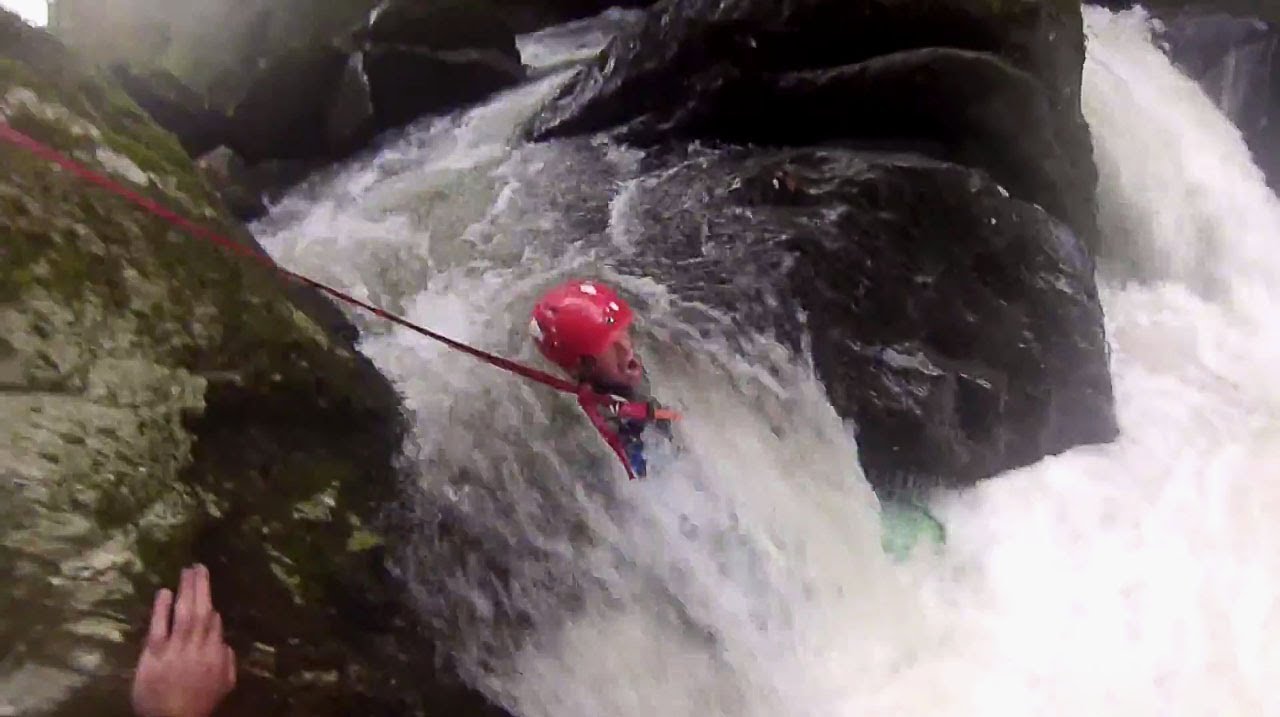Avoid getting pinned or entrapped by recognizing hazards
There are a number of precautions you can take to avoid pinning hazards. A little bit of arm chair kayaking like reviewing guidebooks and the AW web site often alert you to known river hazards like Initiation Rapid on the Upper Gauley. Some other great sources for this type of information are Boatertalk and your local club's website. When running rivers, get in the habit of breaking down rapids into a series of eddy moves. Don't leave an eddy unless you can see a clear line to your next one. If that isn't possible, get out and scout the rapid. Rapids that have severe consequences, like Crack in the Rock on section 4 of the Chattooga River should have safety set. Build your basic boating skills, especially bracing and rolls. If you are upside down, the river is in control - not you. Learn how to identify obstacles like clam shell shaped rocks, sieves, undercuts, and the potential for strainers. Speaking of strainers, stay away from them and don't play upstream from them. It is usually best to portage man-made structures like breached dams. Dams are made with concrete and rebar. Rebar can quickly puncture and cut through any boat material. It can also snag life vests and other clothing.
Pins
 Pinned boats are not that uncommon on small streams. There are many ways boats get pinned like undercut rocks, strainers, boats without flotation, cracks, etc. In the old days when I started, cockpits were quite small and leg entrapment was a significant safety concern. These days, we have huge cockpits and leg entrapment is far less common. Many boats have extra easy to reach attachment points called pin bars - something I always look for in a decent creek boat. Over time, you will learn how to recognize dangerous river features and develop the necessary skills to avoid them. When unpinning a boat, raft, or canoe - you usually have plenty of time. Try using the simplest and safest techniques first.
Pinned boats are not that uncommon on small streams. There are many ways boats get pinned like undercut rocks, strainers, boats without flotation, cracks, etc. In the old days when I started, cockpits were quite small and leg entrapment was a significant safety concern. These days, we have huge cockpits and leg entrapment is far less common. Many boats have extra easy to reach attachment points called pin bars - something I always look for in a decent creek boat. Over time, you will learn how to recognize dangerous river features and develop the necessary skills to avoid them. When unpinning a boat, raft, or canoe - you usually have plenty of time. Try using the simplest and safest techniques first.
Anyone that has been paddling a long time has seen several boat pins. In the old days, this was much more scary. Back then, boats had rather tiny cockpit openings which were really difficult to escape. In England, they required all fiberglass boat makers not to have any cloth, just resin, around the cockpit. This made it easy to smash the deck with your fist for an easier getaway. Boats were roughly twice as long back then as well and many had pointy ends, perfect for getting caught on obstructions. All boats back then required ethafoam pillars to keep the decks from collapsing. We had to install and glue these ourselves. A heads down pin can be really scary for both the victim and your fellow boaters. Since they can't breathe, rescuers often sacrifice their own safety to reach the victim before they drown. Pins are one place where defense reigns king - do whatever you can to avoid them. Here is some video footage of someone getting pinned in their kayak: Kayak Pin.
Page 4 of 4
